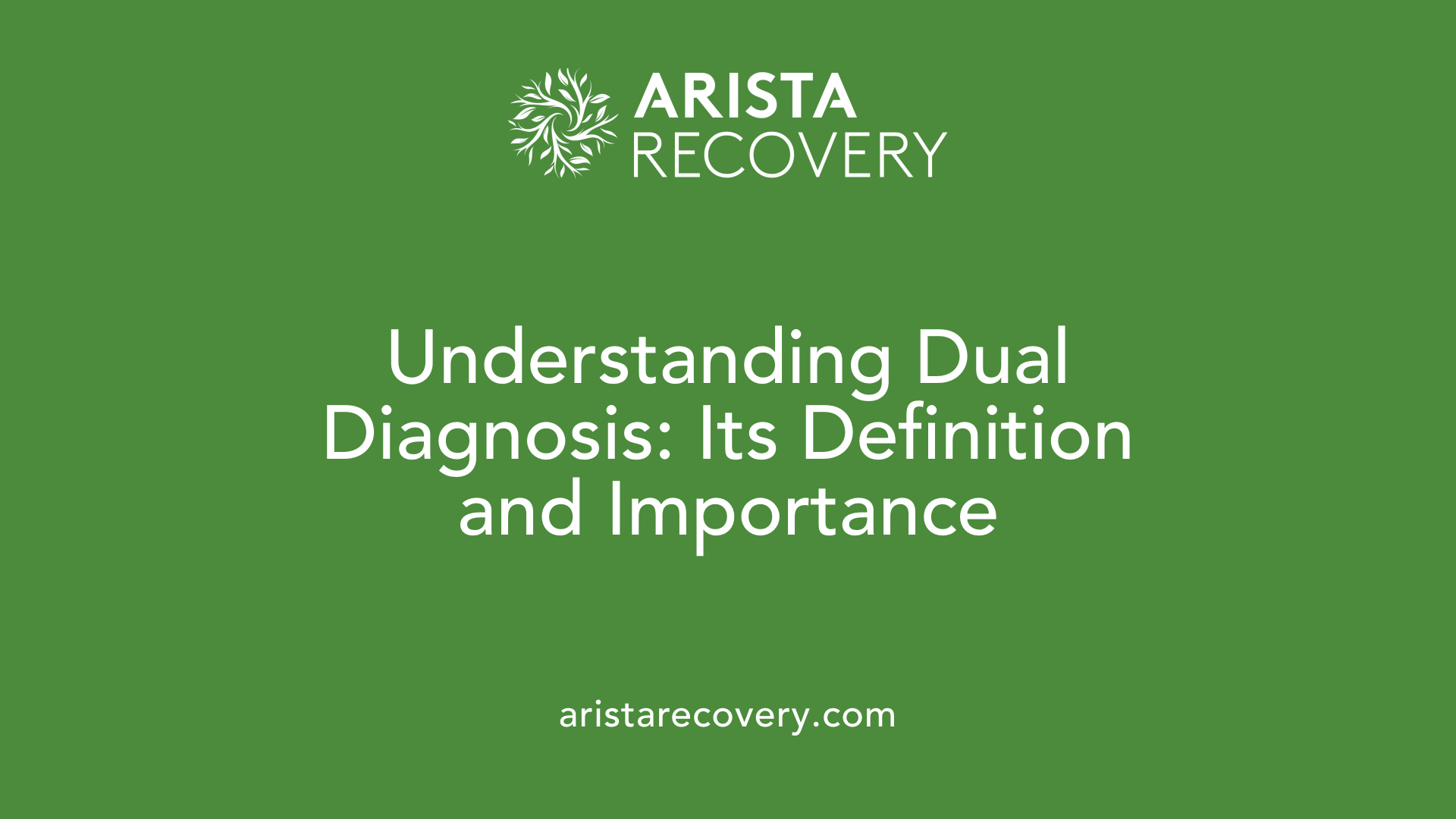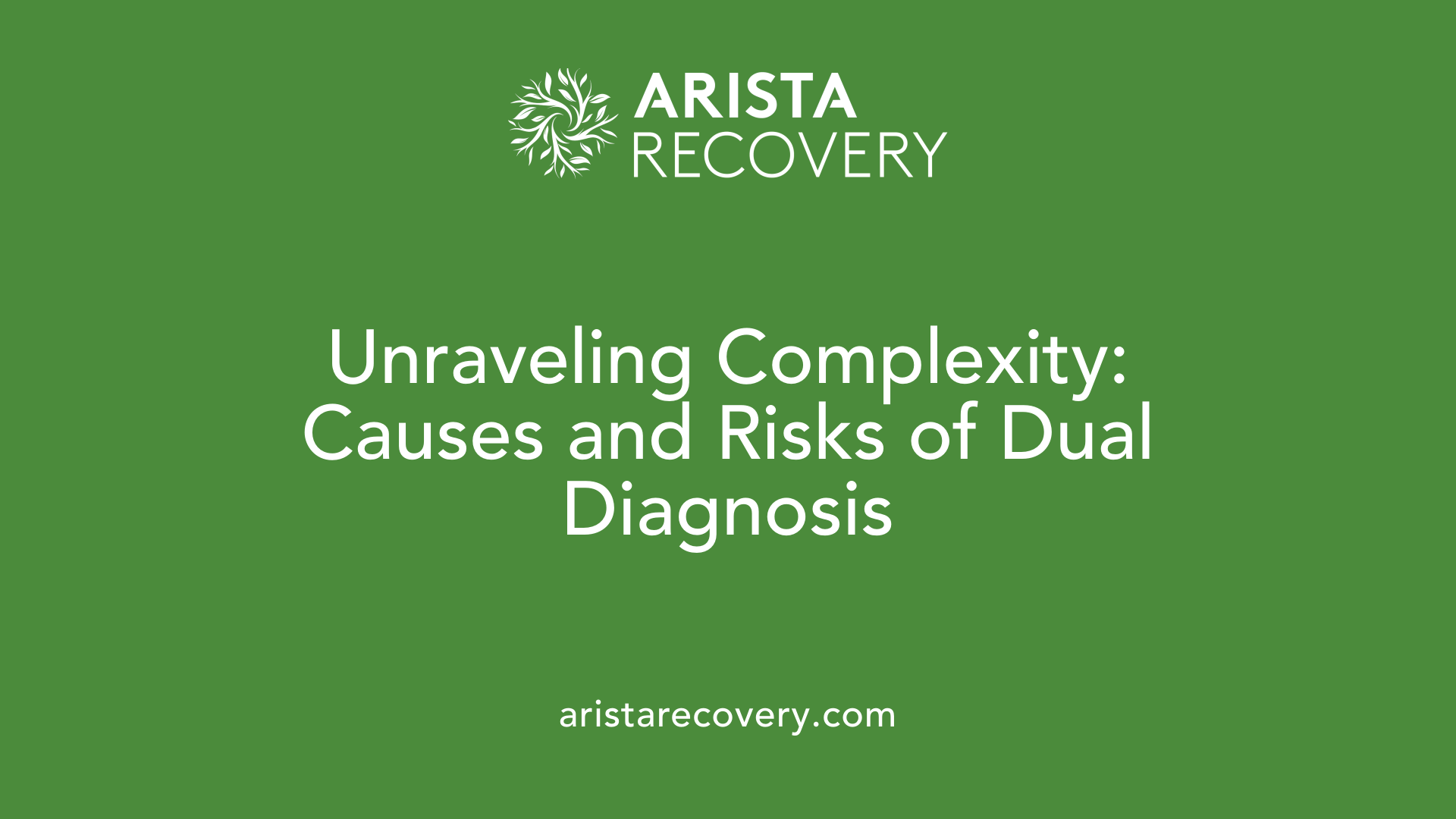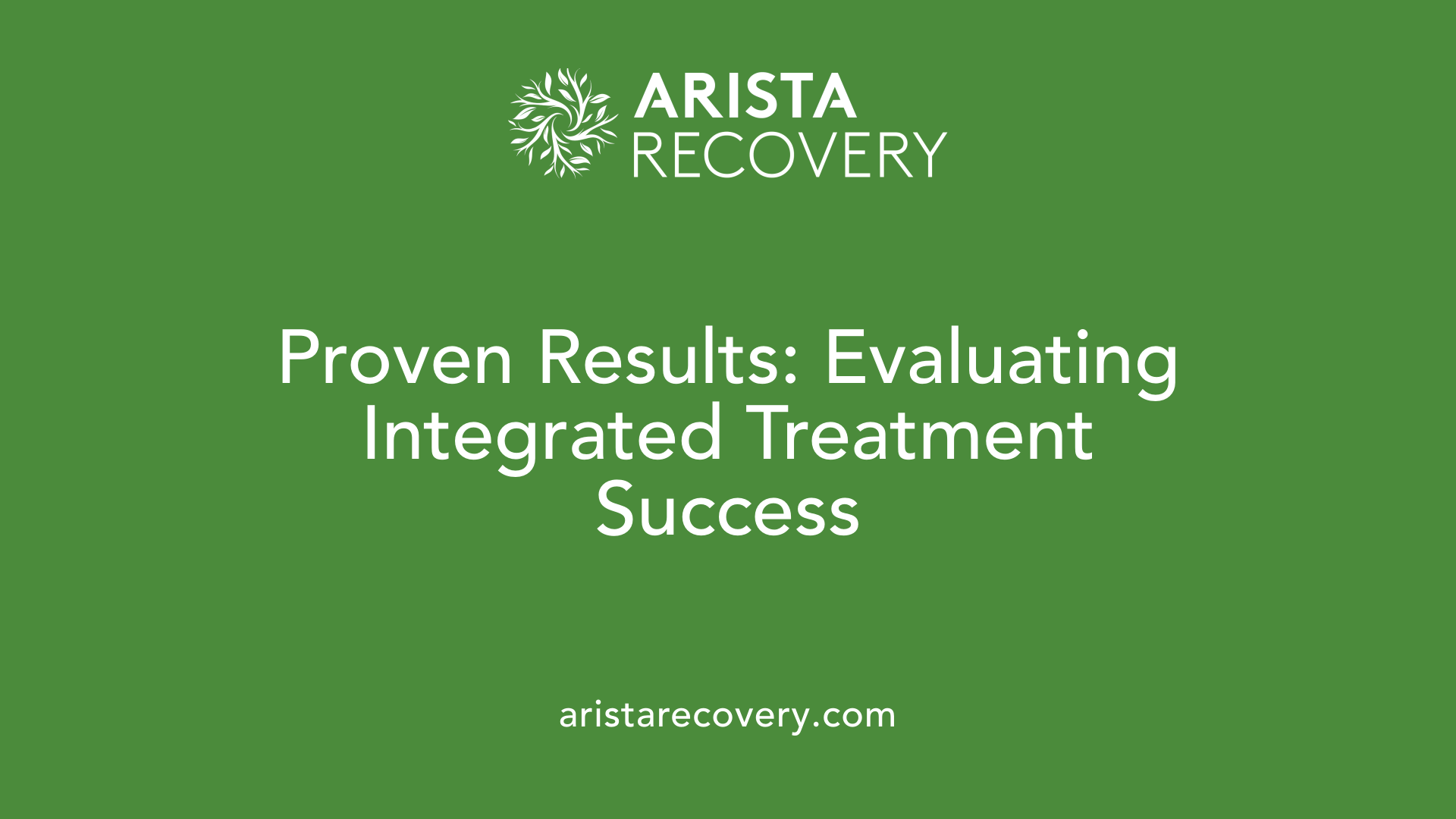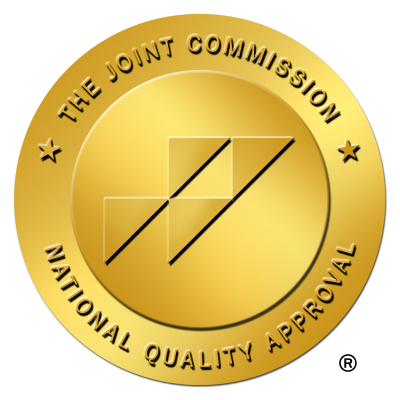Understanding Anxiety and Depression in Dual-Diagnosis Treatment

Understanding the Landscape of Dual Diagnosis
Dual diagnosis, also known as co-occurring disorders, refers to the simultaneous presence of a mental health disorder and a substance use disorder within an individual. Conditions such as anxiety and depression frequently intersect with substance abuse, making diagnosis and treatment more complex. Recognizing the significance of dual diagnosis is crucial, as untreated co-occurring disorders can exacerbate symptoms, hinder recovery, and elevate relapse risks. The interconnected nature of mental health and addiction demands an integrated treatment model that addresses both conditions holistically, with a focus on improving overall quality of life and long-term stability.
Defining Dual Diagnosis and Its Importance

What is dual diagnosis and why is it significant?
Dual diagnosis refers to the situation where an individual experiences both a mental health disorder and a substance use disorder simultaneously. This coexistence makes treatment more complex because each condition can influence and worsen the other.
Research shows that about 50% of people with a mental health disorder also suffer from substance use issues, and vice versa. Common mental illnesses associated with dual diagnosis include depression, anxiety, bipolar disorder, and PTSD. Substance use disorders may involve alcohol, drugs, or other addictive substances.
Having both disorders often results in more severe symptoms, such as extreme mood changes, withdrawal from social activities, increased risky behaviors, and difficulty managing daily life. Untreated mental health issues can lead to increased substance use, creating a vicious cycle. Conversely, substance use can cause changes in brain chemistry, potentially triggering or worsening mental health conditions.
Effective treatment emphasizes an integrated approach that jointly targets both disorders. This may involve behavioral therapies like cognitive-behavioral therapy (CBT) and dialectical behavior therapy (DBT), medication management, and support groups. Such comprehensive treatment improves mental stability, reduces reliance on substances, and increases chances for long-term recovery.
The implications of co-occurring disorders on individual health
Individuals with dual diagnosis face unique challenges. Their symptoms tend to be more intense, and the risk of relapse higher if one condition is neglected. These conditions also complicate diagnosis because overlapping symptoms can obscure clear distinctions.
Moreover, co-occurring disorders are linked to increased medical and psychiatric morbidity, heightened risk of social and occupational impairment, and a greater burden on healthcare systems. Addressing both issues simultaneously not only improves individual outcomes but also reduces the overall societal impact.
Understanding and effectively managing dual diagnosis is crucial for fostering healthier lives and facilitating sustained recovery. Tailored treatments that acknowledge the interaction between mental health and substance use disorders offer the best prospects for long-term wellbeing.
Recognizing the Signs and Symptoms of Co-Occurring Disorders

What are the common signs and symptoms of co-occurring mental health and substance use disorders?
Identifying co-occurring disorders involves paying close attention to a range of behavioral, physical, and psychological signs. People with dual diagnosis often display noticeable behavioral changes such as becoming secretive, engaging in risky activities, withdrawing from social support, and neglecting daily responsibilities. They might also experience physical indicators like bloodshot eyes, weight swings, or unexplained health issues.
Psychologically, these individuals often show mood instability, periods of high anxiety or depression, confused thinking, concentration problems, and thoughts of self-harm or suicide. Substance use symptoms are also apparent, including increased tolerance, withdrawal symptoms when not using substances, and difficulty focusing on tasks or maintaining routines.
The interaction between mental health symptoms and substance use issues can make diagnosis complicated, as each may influence or exacerbate the other. Recognizing these overlapping signs early provides a crucial opportunity for timely intervention. When mental health and substance use symptoms appear together, they create a cycle that worsens overall health, emphasizing the importance of comprehensive assessment and treatment.
Diagnosing Co-Occurring Conditions: Approaches and Challenges

How are dual diagnosis and co-occurring disorders diagnosed?
Diagnosing dual diagnosis involves a detailed and comprehensive assessment process that evaluates both mental health and substance use disorders. Healthcare providers employ a variety of screening tools and methods to identify the presence of co-occurring conditions. These include structured clinical interviews, psychological assessments, and physical examinations.
Since symptoms of mental health issues and substance use can overlap significantly, accurate diagnosis can be complex. For example, withdrawal symptoms, mood swings, or cognitive difficulties may be due to either a mental health disorder or substance effects. To address this challenge, clinicians assess risk factors such as family history, trauma history, stress levels, and motivation for substance use.
Assessment often involves collaborative evaluation of current symptoms, past behaviors, and the impact on daily functioning. No universally standardized criteria exist solely for dual diagnosis, so clinicians depend heavily on clinical judgment, experience, and thorough understanding of the patient's history.
Proper diagnosis is crucial because it guides the development of an integrated treatment plan. Addressing both conditions simultaneously requires precise understanding of how each disorder influences the other, ensuring that therapy, medication, and support systems are appropriately tailored to foster effective recovery.
Causes and Risk Factors of Dual Diagnosis: Unraveling the Complexity

What are the causes and risk factors associated with dual diagnosis?
Dual diagnosis typically arises from a multifaceted blend of genetic, environmental, and neurobiological influences. Individuals with a family history of mental health disorders or substance abuse are more prone to developing both conditions, highlighting the role of genetics in susceptibility.
Environmental factors also play a significant role. Childhood trauma, stress, prenatal exposures, and social challenges such as poverty or social isolation can impact brain development, increasing vulnerability. These stressors may predispose individuals to mental health issues and substance use as coping mechanisms.
Moreover, mental health disorders often lead individuals to self-medicate with alcohol or drugs to manage symptoms like anxiety or depression. Conversely, substance use can induce brain alterations—such as increased dopamine release or serotonin neuron damage—that may trigger or worsen mental health conditions.
The intertwining of shared risk factors and causal pathways makes dual diagnosis complex. It underscores how genetic predispositions combined with environmental exposures and neurobiological changes contribute to the high prevalence of concurrent mental health and substance use disorders, demanding integrated prevention and treatment strategies.
Strategies for Effective Management of Dual Diagnosis

What treatment strategies are effective for managing dual diagnosis?
Managing dual diagnosis successfully requires a comprehensive, integrated treatment plan that targets both mental health and substance use disorders simultaneously. This approach recognizes the complex interplay between the two conditions and aims to treat them as interconnected issues rather than isolated problems.
A core component of effective treatment involves behavioral therapies such as cognitive-behavioral therapy (CBT) and dialectical behavior therapy (DBT). These therapies help individuals develop healthier coping skills, manage symptoms, and reduce reliance on substances as a form of self-medication. In addition, medication management is often employed to stabilize mental health symptoms, reduce cravings, and prevent relapse. Medications like antidepressants or anti-anxiety drugs can be combined with addiction treatments such as opioid substitution therapy or naltrexone.
Support systems play a crucial role in maintaining long-term recovery. Support groups like Alcoholics Anonymous (AA) and Narcotics Anonymous (NA) offer peer encouragement and accountability. Family therapy and community resources further enhance social support, improve communication, and foster a supportive environment.
In more severe cases, inpatient care or detoxification services may be necessary, especially when facing intensive substance dependence or psychiatric crises. These settings provide a structured environment where individuals can undergo supervised detox, receive emergency mental health intervention, and start therapies without external triggers.
A multidisciplinary team—including psychiatrists, psychologists, addiction specialists, social workers, and medical staff—collaborates to create personalized treatment plans. Such collaborative efforts ensure that all aspects of an individual’s health are addressed, improving the chances of sustained recovery and reducing the likelihood of relapse.
In summary, effective management of dual diagnosis hinges on integrated treatment strategies that combine psychotherapy, medication, community involvement, and continuous support to address the unique needs of each individual.
Assessing the Effectiveness of Integrated Treatment Programs
 Research findings consistently demonstrate that integrated treatment programs are more effective for individuals managing co-occurring mental health and substance use disorders than approaches treating each condition separately. These programs are designed to provide coordinated care that simultaneously addresses both issues, fostering a holistic recovery process.
Research findings consistently demonstrate that integrated treatment programs are more effective for individuals managing co-occurring mental health and substance use disorders than approaches treating each condition separately. These programs are designed to provide coordinated care that simultaneously addresses both issues, fostering a holistic recovery process.
Studies, including randomized controlled trials like the Indiana Dual Disorder Treatment (IDDT), reveal that integrated approaches significantly improve motivation for treatment, reduce substance use days, and enhance overall engagement. Participants often show better adherence to treatment plans and increased stability over time.
Impact on relapse and stability indicates that patients involved in integrated programs tend to experience fewer relapses and enjoy longer periods of sobriety compared to those receiving non-integrated care. The comprehensive nature of these programs enhances coping skills, supports emotional regulation, and reduces the risks associated with untreated dual disorders.
However, limitations exist. Some research suggests that while integrated programs excel in reducing substance use, improvements in psychiatric symptoms such as anxiety and depression are less consistent. This variability indicates the need for tailored approaches and possibly additional therapeutic components focused on specific mental health issues.
Future directions for research include refining program structures, exploring personalized treatment modalities, and expanding access to integrated care models. Continued investigation into long-term outcomes and the development of strategies to overcome barriers—such as stigma and funding constraints—are essential for optimizing treatment effectiveness.
In summary, current evidence underscores that integrated treatment models benefit individuals with dual diagnosis, notably in reducing relapse and promoting stability. Ongoing research aims to enhance these programs' effectiveness and ensure they meet diverse patient needs, ultimately supporting sustained recovery and improved quality of life.
Moving Forward with Holistic Care
The landscape of dual diagnosis treatment underscores the importance of integrated, personalized care that recognizes the complex interaction between mental health disorders like anxiety and depression and substance use issues. Advances in therapeutic techniques and understanding of neurobiological underpinnings have led to more effective intervention strategies. Developing comprehensive treatment plans that adapt to each individual's unique needs enhances the likelihood of successful recovery. Continued research, combined with a multidisciplinary, collaborative approach, is essential to address the challenges in treating co-occurring disorders. Supporting affected individuals through education, community resources, and compassionate care can significantly improve outcomes, foster resilience, and facilitate long-term recovery.
References
- Dual Diagnosis: Definition & Treatment - Cleveland Clinic
- Substance Use and Co-Occurring Mental Disorders
- Deal with a Dual Diagnosis: Substance Abuse & Mental Health
- Depression & Anxiety | Dual Diagnosis Treatment Fort Worth
- Dual Diagnosis: An Overview - Lincoln Trail Behavioral Health System
- Understanding dual diagnosis - Alcohol and Drug Foundation
- Integrated Treatment of Substance Use and Psychiatric Disorders
- Understanding Dual Diagnosis Treatment and Why It's Crucial
You’re not alone in this.
When mental health challenges and addiction intersect, it can feel isolating. At Arista, we offer compassionate, evidence-based, and trauma-informed care to help you heal, grow, and move forward.
You’re not alone in this.
When mental health challenges and addiction intersect, it can feel isolating. At Arista, we offer compassionate, evidence-based, and trauma-informed care to help you heal, grow, and move forward.
Support that moves with you.
You’ve taken a brave first step. At Arista Recovery, we’re here to help you continue with best-in-class care designed for long-term healing and support.
.webp)






